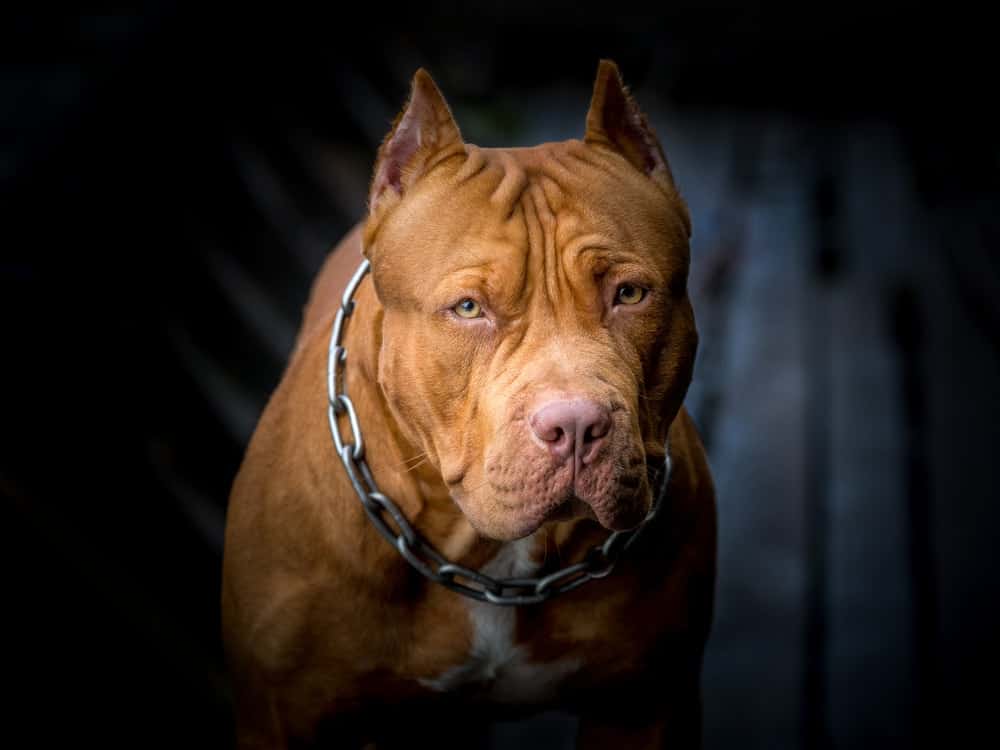
The Real Truth About Pit Bulls
278SHARESFacebookTwitterSubscribe
“This post contains affiliate links, and I will be compensated if you make a purchase after clicking on my links.”
Pit Bulls are very strong, that’s true. But that’s not a crime. That doesn’t negate how sweet and lovable they are. We don’t hold it against people for being too strong, right? No, we don’t. Having said that, people shouldn’t just walk up to strange dogs without clearing it with their human family first. That’s not a Pit Bull issue, that’s just using common sense.


As with people, it’s all in the upbringing. Pit Bulls have been tragically exploited as fighting dogs for a long time now. Fighting dogs are thrown on treadmills and forced to tirelessly and endlessly run. Dog fighters do that to increase their dogs’ stamina so they can last longer in the ring. Their dogs are underfed and trained to be hostile. If people were faced those same conditions, I’d image they’d be hostile too.
Flashback to 2007 when football star Michael Vick’s dog fight operation, Bad Newz Kennels, was raided. Normally, Pit Bulls in these conditions are deemed unable to be rehabilitated and are euthanized. But Best Friends Animal Society and the Bad Rap rescue organization weren’t having that. They stepped up and took the majority of the dogs in. 48 of the 51 Pit Bull-type dogs were placed in foster or re-homed. Their recovery caught the eye of the media and earned the name, “Vicktory Dogs“


As a human dad to five dogs, one being a Pit Bull, I can attest to the sweetness of this breed. I find it quite offensive that Pit Bulls are associated with such fear and violence. Pit Bulls, like other breeds are born innocent. From there, the onus is on people.
History of Pit Bulls – A Quick Look Back
Pit Bulls were created by breeding bulldogs and terriers together. The purpose was to have the strength of the bulldog and agility of the terrier.
The breed’s history dates back to the 1800s in the UK, where they were used to bait bulls (bullbaiting). Years later, bullbating was deemed inhumane. In a ironically tragic turn of events, straight-up dog-fighting took its place. People revered the best fighters as heroes.


It was not until 1976 that Congress amended the Animal Welfare Act and made dog-fighting illegal in all 50 states. But by the 1980s, dog-fighting was on the rise. Some think that criminalizing it actually made dog-fighting more appealing to criminals. Others think a 1987 article in Sports Illustrated entitled “The Pit Bull Friend and Killer” influenced the rise of dog-fighting.
Breed Specific Legislation
The increasing public awareness of the horror of dog-fighting and the supposed “dangers” of Pit Bulls gave rise to Breed Specific Legislation (BSL) in the late 1980s. Breed Specific Legislation is a law or ordinance that either bans or restricts ownership of certain dogs based on their appearance. Most BSL affects these breeds (or dogs that resemble them): American Staffordshire Terriers, American Pit Bull Terriers, Staffordshire Bull Terriers and English Bull Terriers, Rottweilers, Mastiffs, Dalmatians, German Shepherds, Doberman Pinschers, Chow Chows, or any mix of these breeds


Hundreds of municipalities have now adopted BSL. However, at least 20 states have passed statutes that forbid their cities and towns from enacting BSL. The issue remains highly contentious.
The Centers for Disease Control and Prevention conducted a study of human fatalities resulting from dog bites. The study concluded that there is no evidence that breed-specific laws make communities safer for people or companion animals. The CDC recommended that dogs be evaluated on an individual basis, not on a breed basis. The study further notes that dog bite statistics can’t be fully relied on because they lack context. For example, many dog bites are defensive bites that occur when dogs are trying to defend themselves. But the statistic only picks up the bite, not the nature of the bite. Statistics about which dog breeds are responsible for the largest number of bites are also misleading, since they speak more to the popularity of specific breeds rather than to the breed itself.
Pit Bull rescue, Rocky of Puerto Rico – A Personal Story


It was an ordinary Thursday on November 19th, 2015. I was out walking three of my dogs at a close by park. The next thing I knew, a Pit Bull-mix living on the street approached us.
Originally, I would be quite concerned. As my three dogs and I continued to walk, the pittie followed us. When we stopped, he stopped. Eventually, he walked right up to us and sat down.
I realized this dog was not a threat at all. He was letting me know that he was lost and didn’t know how to take care of himself. So I took my three dogs back to the house and came back to the park to sit with him. That was 727 days ago. He’s never lived on the street since then.
Rocky is now my best friend. I call him “My Little Big Guy.” He’s little in the sense that he was a year old when we first met in the park. He’s big in the sense that physically, he’s a large dog. And he has completed my life. When I’m with him, I’m able to forget about my cares, concerns, and anxieties and do nothing but delight in his enthusiastic companionship. Rocky is a living illustration of the question, “Who rescued whom?” Indeed, he rescued me.


Editor’s bio:
Scott Smith is the pet editor for ConsumersAdvocate.org, as well as a content creator and social media expert. Scott also runs a large animal community, “Everybody Loves Sammy,” which he created about seven years ago, and it’s known all over the world now. Sammy is one of his 5 dogs. “Everybody Loves Sammy” is just the name now. The community itself is about animals and people from all walks of life. Additionally, Scott created the Dr. Harp Seal community, the “I’m a Pig Man” advocacy message, the Drive With Compassion movement in Puerto Rico and most notably, wrote and recorded “Where is the Geneva Convention for Animals?”, which can be heard on SoundCloud by Dr. Harp Seal.



